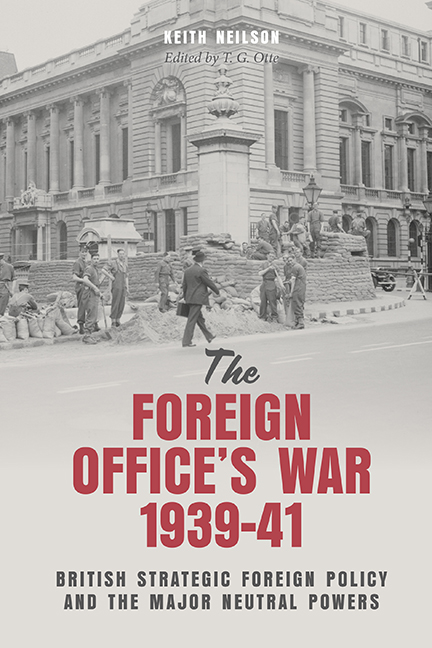Book contents
- Frontmatter
- Contents
- Preface and Acknowledgments
- List of Abbreviations
- Introduction: Keith Neilson and Modern International History
- 1 On the Eve of War: January to September 1939
- 2 The Baltic, Blockade and Soviet Russia: September 1939–June 1940
- 3 Defending the Mediterranean: Italy, Russia and the Balkans, September 1939–June 1940
- 4 Defending Britain and the Far East: The United States, Japan and Soviet Russia, September 1939–June 1940
- 5 ‘Nothing for nothing’: From the Fall of France to Operation Barbarossa: July 1940–June 1941
- Epilogue
- Appendix I Members of the American, Central, Eastern, Far Eastern, Northern and Southern Departments, 1939–41
- Appendix II Dramatis Personae
- Appendix III Keith Neilson, List of Publications
- Bibliography
- Index
5 - ‘Nothing for nothing’: From the Fall of France to Operation Barbarossa: July 1940–June 1941
Published online by Cambridge University Press: 16 July 2022
- Frontmatter
- Contents
- Preface and Acknowledgments
- List of Abbreviations
- Introduction: Keith Neilson and Modern International History
- 1 On the Eve of War: January to September 1939
- 2 The Baltic, Blockade and Soviet Russia: September 1939–June 1940
- 3 Defending the Mediterranean: Italy, Russia and the Balkans, September 1939–June 1940
- 4 Defending Britain and the Far East: The United States, Japan and Soviet Russia, September 1939–June 1940
- 5 ‘Nothing for nothing’: From the Fall of France to Operation Barbarossa: July 1940–June 1941
- Epilogue
- Appendix I Members of the American, Central, Eastern, Far Eastern, Northern and Southern Departments, 1939–41
- Appendix II Dramatis Personae
- Appendix III Keith Neilson, List of Publications
- Bibliography
- Index
Summary
With the fall of France, the legacies of the First World War largely ceased to be relevant for both Britain and Soviet Russia. Britain no longer had either a Western front or a Continental ally. Instead, Germany would have to be defeated in other locales and by British efforts alone. Soviet Russia no longer could rely on an exhausting war of attrition in the West to ensure its safety. Instead, that nation would have to defend itself with its own resources and by means of the Nazi-Soviet Pact. For Britain, the situation was more reminiscent of the ‘Great War’ against Napoleon than of the war of 1914–18. Until the Nazi invasion of Soviet Russia, Britain was forced to carry on her struggle by means of a peripheral strategy, just as she had in the Napoleonic War after the Treaty of Tilsit of 1807 had created an uneasy Franco-Russian condominium over the Continent. And there was an extra-European threat to Empire in both wars, with Japan playing the part in the Far East in 1940–41 that the United States had played in the New World in 1807–12. And, in both wars, Britain had to wait until the Continental hegemons fell out before she could do more than simply survive. The ‘Munich’ period of British strategic foreign policy had reached its final phase.
However, the hope that the Nazi-Soviet Pact would prove an ephemeral bond meant that, from June 1940 until June the following year, Moscow continued to play a role, albeit a diminished one, in British strategic foreign policy. In Europe, the British still hoped that the Soviets could be weaned away from Germany, and, in the meanwhile, would help to prevent any German expansion in the Balkans, particularly towards the Straits and into the Middle East. However, at the same time, there were concerns that Stalin might be enticed by Hitler to join in a swoop against Turkey. While the latter did not come to pass, the entry of German troops into Roumania on 7 October, the Italian attack on Greece three weeks later and the German invasion of Yugoslavia on 6 April, all without Soviet response, showed the British that any reliance on Soviet assistance was futile. In the Far East, the situation became increasingly difficult.
- Type
- Chapter
- Information
- The Foreign Office's War, 1939-41British Strategic Foreign Policy and the Major Neutral Powers, pp. 261 - 292Publisher: Boydell & BrewerPrint publication year: 2022

